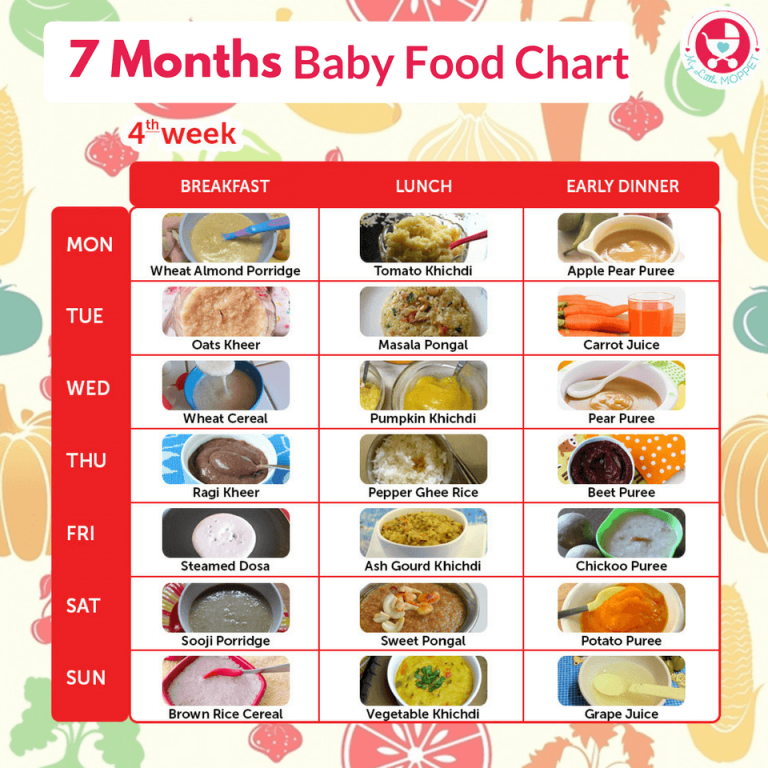How much ebm to feed baby
How much breast milk to express
The amount of breast milk you need to express, and how often you express, will depend on the situation. For example, you may need to express more for your newborn baby if they are unable to breastfeed.
The amount you express for an older baby will depend on the number of times they breastfeed each day.
Important
These amounts are only a guide.
If your baby is born sick or premature, you may not reach this volume.
Any amount that you can express for your baby is helpful. Your midwife, lactation consultant or public health nurse (PHN) can help you.
Expressing breast milk for premature or ill babies
Newborn babies
If you need to express milk for your baby in the early days after birth, here's a guideline on what to expect:
| Day | Milk expressed in 24 hours | How much your baby will get at a feed |
|---|---|---|
| Day Day 1 | Milk expressed in 24 hours 7ml to 123ml | How much your baby will get at a feed from a few drops to 5ml (5ml is approximately 1 teaspoon) |
| Day Day 2 | Milk expressed in 24 hours 44ml to 335ml | How much your baby will get at a feed from 5ml to 15ml |
| Day Day 3 | Milk expressed in 24 hours 98ml to 775ml | How much your baby will get at a feed from 15ml to 30ml |
With time and practice, it will become easier and the amount of milk you express will increase.
How to express breast milk
How much milk a growing baby needs
In exclusively breastfed babies (babies who are fed breast milk only), milk intake increases quickly during the first few weeks of life.
How much milk a baby consumes will change as they get older and grow bigger.
During the first week, most full-term babies take no more than 1 to 2 ounces (30 to 60ml) at feedings. This is because newborns’ stomachs are so small.
After 4 to 5 weeks, babies reach their peak feeding volume of about 3 to 4 ounces (90 to 120ml) and peak daily milk intake of about 30 ounces per day (900ml). This should stay about the same between 1 and 6 months, although it generally increases short-term during growth spurts.
After 6 months, your baby’s milk intake begins to decrease gradually as you introduce solid food.
Expressing for time away from baby
Research tells us that exclusively breastfed babies take in an average of 25 oz (750ml) per day when they are 1 to 6 months old. A typical range of milk intake is 19oz to 30oz (570ml to 900ml) per day.
Use these steps to work out the amount of breast milk your baby will need:
- Estimate the number of times that your baby breastfeeds per day (in 24 hours).
- Divide 25oz (750ml) by the number of breastfeeds.
- This gives you a rough guide for the amount of expressed milk your exclusively breastfed baby will need at one feeding.
For example, if your baby usually breastfeeds around 8 times per day, you can guess that they might need around 3 oz (94ml) of expressed breast milk per feeding.
Breastfeeding - concern about overfeeding
Concern about your breast milk supply
This project has received funding from the Government of Ireland’s Sláintecare Integration Fund 2019 under Grant Agreement Number 8.
Page last reviewed: 2 May 2022
Next review due: 2 May 2025
How much expressed milk will my baby need? • KellyMom.com
By Kelly Bonyata, BS, IBCLC
- How much milk do babies need?
- What if baby is eating solid foods?
- Is baby drinking too much or too little expressed milk?
- Other ways of estimating milk intake
- References
Image credit: Jerry Bunkers on flickr
How much milk do babies need?
Many mothers wonder how much expressed breastmilk they need to have available if they are away from baby.
.
In exclusively breastfed babies, milk intake increases quickly during the first few weeks of life, then stays about the same between one and six months (though it likely increases short term during growth spurts). Current breastfeeding research does not indicate that breastmilk intake changes with baby’s age or weight between one and six months. After six months, breastmilk intake will continue at this same level until — sometime after six months, depending in baby’s intake from other foods — baby’s milk intake begins to decrease gradually (see below).
After six months, breastmilk intake will continue at this same level until — sometime after six months, depending in baby’s intake from other foods — baby’s milk intake begins to decrease gradually (see below).
The research tells us that exclusively breastfed babies take in an average of 25 oz (750 mL) per day between the ages of 1 month and 6 months. Different babies take in different amounts of milk; a typical range of milk intakes is 19-30 oz per day (570-900 mL per day).
We can use this information to estimate the average amount of milk baby will need at a feeding:
- Estimate the number of times that baby nurses per day (24 hours).
- Then divide 25 oz by the number of nursings.
- This gives you a “ballpark” figure for the amount of expressed milk your exclusively breastfed baby will need at one feeding.
Example: If baby usually nurses around 8 times per day, you can guess that baby might need around 3 ounces per feeding when mom is away.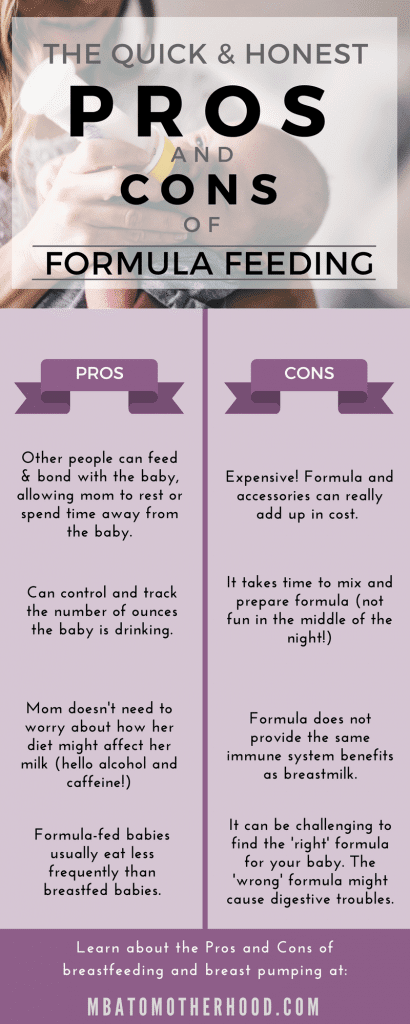 (25/8=3.1).
(25/8=3.1).
What if baby is eating solid foods?
Sometime between six months and a year (as solids are introduced and slowly increased) baby’s milk intake may begin to decrease, but breastmilk should provide the majority of baby’s nutrition through the first year. Because of the great variability in the amount of solids that babies take during the second six months, the amount of milk will vary, too. One study found average breastmilk intake to be 30 oz per day (875 ml/day; 93% of total intake) at 7 months and 19 oz (550 ml/day; 50% of total energy intake) at 11-16 months.
Several studies have measured breastmilk intake for babies between 12 and 24 months and found typical amounts to be 14-19 oz per day (400-550 mL per day). Studies looking at breastmilk intake between 24 and 36 months have found typical amounts to be 10-12 oz per day (300-360 mL per day).
Is baby drinking too much or too little expressed milk?
Keep in mind that the amount of milk that baby takes at a particular feeding will vary, just as the amount of food and drink that an adult takes throughout the day will vary.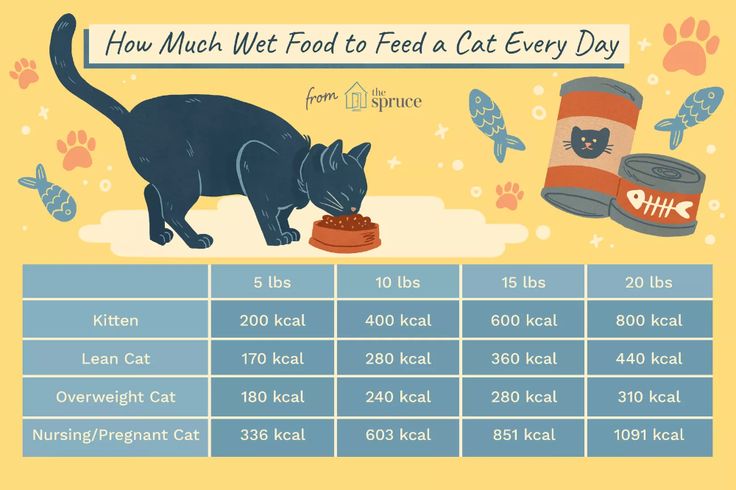 Baby will probably not drink the same amount of milk at each feeding. Watch baby’s cues instead of simply encouraging baby to finish the bottle.
Baby will probably not drink the same amount of milk at each feeding. Watch baby’s cues instead of simply encouraging baby to finish the bottle.
If your baby is taking substantially more than the average amounts, consider the possibility that baby is being given too much milk while you are away. Things that can contribute to overfeeding include:
- Fast flow bottles. Always use the lowest flow bottle nipple that baby will tolerate. Even with a slower flowing nipple, it is important to pace the bottle feed to allow baby to better control his intake.
- Using bottle feeding as the primary way to comfort baby. Some well-meaning caregivers feed baby the bottle every time he makes a sound. Use the calculator above to estimate the amount of milk that baby needs, and start with that amount. If baby still seems to be hungry, have your caregiver first check to see whether baby will settle with walking, rocking, holding, etc. before offering another ounce or two.
- Baby’s need to suck.
 Babies have a very strong need to suck, and the need may be greater while mom is away (sucking is comforting to baby). A baby can control the flow of milk at the breast and will get minimal milk when he mainly needs to suck. When drinking from a bottle, baby gets a larger constant flow of milk as long as he is sucking. If baby is taking large amounts of expressed milk while you are away, you might consider encouraging baby to suck fingers or thumb, or consider using a pacifier for the times when mom is not available, to give baby something besides the bottle to satisfy his sucking needs.
Babies have a very strong need to suck, and the need may be greater while mom is away (sucking is comforting to baby). A baby can control the flow of milk at the breast and will get minimal milk when he mainly needs to suck. When drinking from a bottle, baby gets a larger constant flow of milk as long as he is sucking. If baby is taking large amounts of expressed milk while you are away, you might consider encouraging baby to suck fingers or thumb, or consider using a pacifier for the times when mom is not available, to give baby something besides the bottle to satisfy his sucking needs. - If, after trying these suggestions, you’re still having a hard time pumping enough milk, see I’m not pumping enough milk. What can I do?
If baby is taking significantly less expressed milk than the average, it could be that baby is reverse-cycling, where baby takes just enough milk to “take the edge off” his hunger, then waits for mom to return to get the bulk of his calories. Baby will typically nurse more often and/or longer than usual once mom returns. Some mothers encourage reverse cycling so they won’t need to pump as much milk. Reverse cycling is common for breastfed babies, especially those just starting out with the bottle.
Baby will typically nurse more often and/or longer than usual once mom returns. Some mothers encourage reverse cycling so they won’t need to pump as much milk. Reverse cycling is common for breastfed babies, especially those just starting out with the bottle.
If your baby is reverse cycling, here are a few tips:
- Be patient. Try not to stress about it. Consider it a compliment – baby prefers you!
- Use small amounts of expressed milk per bottle so there is less waste.
- If you’re worrying that baby can’t go that long without more milk, keep in mind that some babies sleep through the night for 8 hours or so without mom needing to worry that baby is not eating during that time period. Keep an eye on wet diapers and weight gain to assure yourself that baby is getting enough milk.
- Ensure that baby has ample chance to nurse when you’re together.
Other ways of estimating milk intake
There are various ways of estimating the amount of milk intake related to the weight of the baby and the age of the baby, based upon formula intake – research has shown that after the early weeks these methods overestimate the amount of milk that baby actually needs. These are the estimates that we used for breastfed babies for years, with the caveat that most breastfed babies don’t take as much expressed milk as estimated by these methods. Current research tells us that breastmilk intake is quite constant after the first month and does not appreciably increase with age or weight, so the current findings are validating what moms and lactation counselors have observed all along.
These are the estimates that we used for breastfed babies for years, with the caveat that most breastfed babies don’t take as much expressed milk as estimated by these methods. Current research tells us that breastmilk intake is quite constant after the first month and does not appreciably increase with age or weight, so the current findings are validating what moms and lactation counselors have observed all along.
More:
- Breast Versus Bottle: How much milk should baby take? By Nancy Mohrbacher, IBCLC, FILCA
- Supplementation Guidelines from LowMilkSupply.org
References
Onyango, Adelheid W., Receveur, Olivier and Esrey, Steven A. The contribution of breast milk to toddler diets in western Kenya. Bull World Health Organ, 2002, vol.80 no.4. ISSN 0042-9686.
Salazar G, Vio F, Garcia C, Aguirre E, Coward WA. Energy requirements in Chilean infants. Arch Dis Child Fetal Neonatal Ed. 2000 Sep;83(2):F120-3.
Kent JC, Mitoulas L, Cox DB, Owens RA, Hartmann PE. Breast volume and milk production during extended lactation in women. Exp Physiol. 1999 Mar;84(2):435-47.
Breast volume and milk production during extended lactation in women. Exp Physiol. 1999 Mar;84(2):435-47.
Persson V, Greiner T, Islam S, and Gebre-Medhin M. The Helen Keller international food-frequency method underestimates vitamin A intake where sustained breastfeeding is common. Food and Nutrition Bulletin, vol.19 no.4. Tokyo, Japan: United Nations University Press, 1998.
Cox DB, Owens RA, Hartmann PE. Blood and milk prolactin and the rate of milk synthesis in women. Exp Physiol. 1996 Nov;81(6):1007-20.
Dewey KG, Heinig MJ, Nommsen LA, Lonnerdal B. Maternal versus infant factors related to breast milk intake and residual milk volume: the DARLING study. Pediatrics. 1991 Jun;87(6):829-37.
Neville MC, et al. Studies in human lactation: milk volumes in lactating women during the onset of lactation and full lactation. Am J Clin Nutr. 1988 Dec;48(6):1375-86.
Dewey KG, Finley DA, Lonnerdal B. Breast milk volume and composition during late lactation (7-20 months). J Pediatr Gastroenterol Nutr. 1984 Nov;3(5):713-20.
J Pediatr Gastroenterol Nutr. 1984 Nov;3(5):713-20.
Butte NF, Garza C, Smith EO, Nichols BL. Human milk intake and growth in exclusively breast-fed infants. J Pediatr. 1984 Feb;104(2):187-95.
Dewey KG, Lonnerdal B. Milk and nutrient intake of breast-fed infants from 1 to 6 months: relation to growth and fatness. J Pediatr Gastroenterol Nutr. 1983;2(3):497-506.
Brown K, Black R, Robertson A, Akhtar N, Ahmed G, Becker S. Clinical and field studies of human lactation: methodological considerations. Am J Clin Nutr 1982;35:745-56.
Jelliffe D, Jelliffe E. The volume and composition of human milk in poorly nourished communities: a review. Am J Clin Nutr 1978;31:492-515.
| Summary of Research Data | ||||
| Baby’s Age | Average Milk Intake per 24 hours | Reference | ||
| g | ml | oz | ||
| 5 days | 498 +/- 129 g | 483 ml | 16 oz | Neville 1988 |
| 1 mo | 728 g | 706 ml | 24 oz | Salazar 2000 |
| 1 mo | — | 673 ml | 23 oz | Dewey 1983 |
| 1 mo | 708 +/- 54.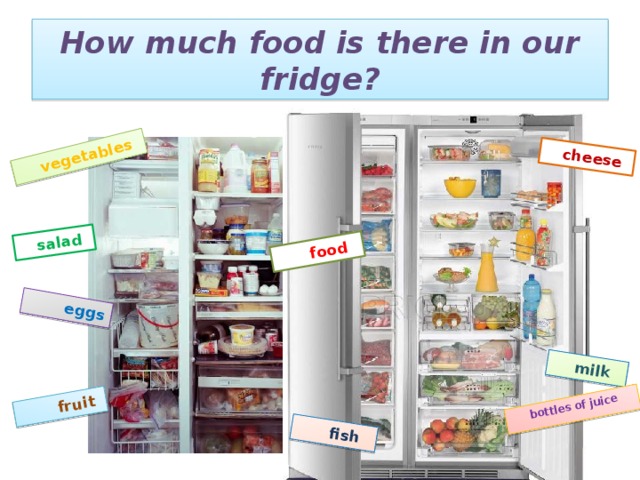 7 g 7 g | 687 ml | 23 oz | Cox 1996 |
| 1-6 mo | 453.6+/-201 g per breast | 440 ml x2 = 880 ml | 30 oz | Kent 1999 |
| 3 mo | 818 g | 793 ml | 27 oz | Dewey 1991 |
| 3-5 mo | 753 +/- 89 g | 730 ml | 25 oz | Neville 1988 |
| 6 mo | — | 896 ml | 30 oz | Dewey 1983 |
| 6 mo | 742 +/- 79.4 g | 720 ml | 24 oz | Cox 1996 |
| 7 mo | — | 875 ml (93% of total energy intake) | 30 oz | Dewey 1984 |
| 11-16 mo | — | 550 ml (50% of total energy intake) | 19 oz | Dewey 1984 |
| 11-16 mo | 502 +/- 34 g | 487 ml (32% of total energy intake) | 16.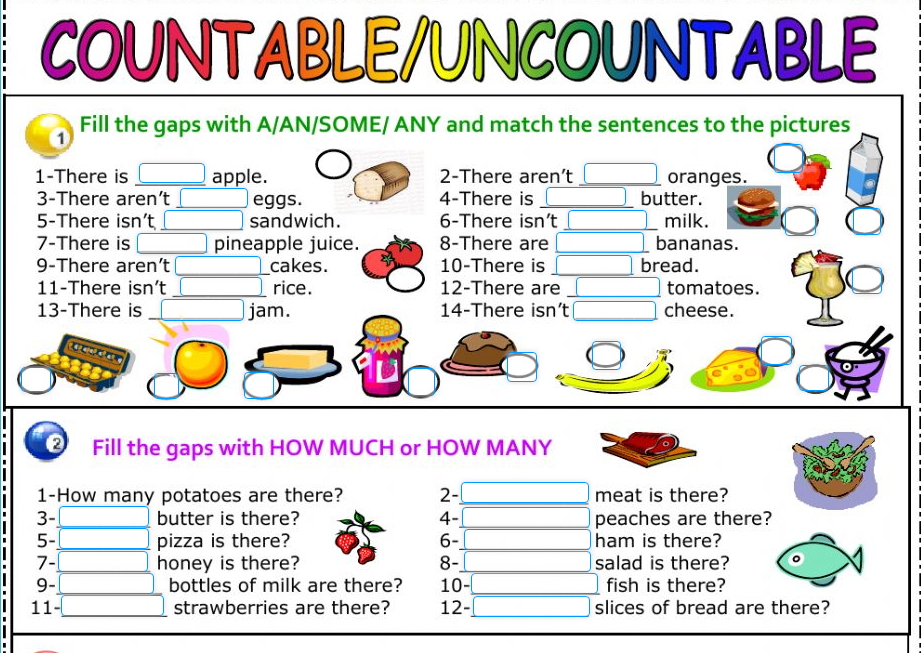 5 oz 5 oz | Onyango 2002 |
| 12-17 mo | 563 g | 546 ml | 18 oz | Brown 1982 |
| 12-23 mo | 548 g | 532 ml | 18 oz | Persson 1998 |
| 15 mo | 208.0+/-56.7 g per breast | 202 ml x2 = 404 ml | 14 oz | Kent 1999 |
| 18-23 mo | 501 g | 486 ml | 16 oz | Brown 1982 |
| >24 mo | 368 g | 357 ml | 12 oz | Brown 1982 |
| 24-36 mo | 312 g | 303 ml | 10 oz | Persson 1998 |
| Specific Gravity of Mature Human Milk = 1.031, so Density of Mature Human Milk ~ 1.031 g/ml;1 oz = 29.6 ml;Numbers in gray were derived using the above conversion factors. | ||||
Breastfeeding in the first month: what to expect
Not sure how to establish lactation and increase milk production? If you need help, support, or just want to know what to expect, read our first month breastfeeding advice
Share this information
The first weeks of breastfeeding are a very stressful period. If at times you feel like you can't handle it, know that you are not alone. Feeding your baby all day long is completely natural and helps produce breast milk, but can be quite tiring at times. Be patient, think about yourself and remember: after the first month, when milk production stabilizes, it will become easier. nine0003
If at times you feel like you can't handle it, know that you are not alone. Feeding your baby all day long is completely natural and helps produce breast milk, but can be quite tiring at times. Be patient, think about yourself and remember: after the first month, when milk production stabilizes, it will become easier. nine0003
How often should a baby be breastfed?
Babies are born with a small stomach that grows rapidly with increasing milk production: in the first week it is no larger than an apricot, and after two weeks it is already the size of a large hen's egg. 1.2 Let the child eat as much as he wants and when he wants. This will help him quickly regain the weight lost after birth and grow and develop further.
“Be prepared to feed every two to three hours throughout the day. At night, the intervals between feedings can be longer: three to four or even five hours, says Cathy Garbin, a recognized international expert on breastfeeding. Some eat quickly and are satiated in 15 minutes, while others take an entire hour to feed. Do not compare your breastfeeding regimen with that of other mothers - it is very likely that there will be nothing in common between them. nine0003
Do not compare your breastfeeding regimen with that of other mothers - it is very likely that there will be nothing in common between them. nine0003
At each feed, give your baby a full meal from one breast and then offer a second one, but don't worry if the baby doesn't take it. When the baby is full, he lets go of his chest and at the same time looks relaxed and satisfied - so much so that he can immediately fall asleep. The next time you feed, start on the other breast. You can monitor the order of the mammary glands during feeding using a special application.
Why does the child always ask for a breast?
The first month is usually the hardest time to breastfeed. But do not think that because the baby is constantly hungry and asks for a breast almost every 45 minutes, then you do not have enough milk. nine0003
In the first month, the baby needs to eat frequently to start and stimulate the mother's milk production. It lays the foundation for a stable milk supply in the future. 3
3
In addition, we must not forget that the child needs almost constant contact with the mother. The bright light and noise of the surrounding world at first frighten the baby, and only by clinging to his mother, he can calm down.
Sarah, mother of three from the UK, confirms: “Crying is not always a sign of hunger. Sometimes my kids just wanted me to be around and begged for breasts to calm them down. Use a sling. Place the cradle next to the bed. Don't look at the clock. Take advantage of every opportunity to relax. Forget about cleaning. Let those around you take care of you. And not three days, but six weeks at least! Hug your baby, enjoy the comfort - and trust your body." nine0003
Do I need to feed my baby on a schedule?
Your baby is still too young for a strict daily routine, so
forget about breastfeeding schedules and focus on his needs.
“Volumes have been written about how to feed a baby on a schedule, but babies don't read or understand books,” Cathy says. - All children are different. Some people can eat on a schedule, but most can't. Most often, over time, the child develops his own schedule.
- All children are different. Some people can eat on a schedule, but most can't. Most often, over time, the child develops his own schedule.
Some mothers report that their babies are fine with scheduled feedings, but they are probably just the few babies who would eat every four hours anyway. Adults rarely eat and drink the same foods at the same time of day - so why do we expect this from toddlers?
Offer your baby the breast at the first sign of hunger. Crying is already the last stage, so be attentive to early signs: the baby licks his lips, opens his mouth, sucks his fist, turns his head with his mouth open - looking for the breast. nine0013 4
What is a "milk flush"?
At the beginning of each feed, a hungry baby actively sucks on the nipple,
thereby stimulating the milk flow reflex - the movement of milk through the milk ducts. 5
“Nipple stimulation triggers the release of the hormone oxytocin,” explains Cathy. “Oxytocin is distributed throughout the body and causes the muscles around the milk glands to contract and the milk ducts to dilate. This stimulates the flow of milk. nine0003
This stimulates the flow of milk. nine0003
If the flushing reflex fails, milk will not come out. This is a hormonal response, and under stress it may not work at all or work poorly. Therefore, it is so important that you feel comfortable and calm when feeding.
“Studies show that each mother has a different rhythm of hot flashes during one feed,” Kathy continues, “Oxytocin is a short-acting hormone, it breaks down in just 30-40 seconds after formation. Milk begins to flow, the baby eats, the effect of oxytocin ends, but then a new rush of milk occurs, the baby continues to suckle the breast, and this process is repeated cyclically. That is why, during feeding, the child periodically stops and rests - this is how nature intended. nine0003
The flow of milk may be accompanied by a strong sensation of movement or tingling in the chest, although 21% of mothers, according to surveys, do not feel anything at all. 5 Cathy explains: “Many women only feel the first rush of milk. If you do not feel hot flashes, do not worry: since the child eats normally, most likely, you simply do not understand that they are.
If you do not feel hot flashes, do not worry: since the child eats normally, most likely, you simply do not understand that they are.
How do you know if a baby is getting enough milk?
Since it is impossible to track how much milk a baby eats while breastfeeding, mothers sometimes worry that the baby is malnourished. Trust your child and your body. nine0003
After a rush of milk, the baby usually begins to suckle more slowly. Some mothers clearly hear how the baby swallows, others do not notice it. But one way or another, the child himself will show when he is full - just watch carefully. Many babies make two or three approaches to the breast at one feeding. 6
“When a child has had enough, it is noticeable almost immediately: a kind of “milk intoxication” sets in. The baby is relaxed and makes it clear with his whole body that he is completely full, says Katie, “Diapers are another great way to assess whether the baby is getting enough milk. During this period, a breastfed baby should have at least five wet diapers a day and at least two portions of soft yellow stool, and often more. ” nine0003
” nine0003
From one month until weaning at six months of age, a baby's stool (if exclusively breastfed) should look the same every day: yellow, grainy, loose, and watery.
When is the child's birth weight restored?
Most newborns lose weight in the first few days of life. This is normal and should not be cause for concern. As a rule, weight is reduced by 5-7%, although some may lose up to 10%. One way or another, by 10–14 days, almost all newborns regain their birth weight. In the first three to four months, the minimum expected weight gain is an average of 150 grams per week. But one week the child may gain weight faster, and the next slower, so it is necessary that the attending physician monitor the health and growth of the baby constantly. nine0013 7.8
At the slightest doubt or signs of dehydration, such as
dark urine, no stool for more than 24 hours, retraction of the fontanel (soft spot on the head), yellowing of the skin, drowsiness, lethargy, lack of appetite (ability to four to six hours without feeding), you should immediately consult a doctor. 7
7
What is "cluster feeding"?
When a baby asks to breastfeed very often for several hours, this is called cluster feeding. nine0013 6 The peak often occurs in the evening between 18:00 and 22:00, just when many babies are especially restless and need close contact with their mother. Most often, mothers complain about this in the period from two to nine weeks after childbirth. This is perfectly normal and common behavior as long as the baby is otherwise healthy, eating well, gaining weight normally, and appears content throughout the day. 9
Cluster feeding can be caused by a sharp jump in the development of the body - during this period the baby especially needs love, comfort and a sense of security. The growing brain of a child is so excited that it can be difficult for him to turn off, or it just scares the baby. nine0013 9 If a child is overworked, it is often difficult for him or her to calm down on his own, and adult help is needed..jpg) And breastfeeding is the best way to calm the baby, because breast milk is not only food, but also pain reliever and a source of happiness hormones. 10
And breastfeeding is the best way to calm the baby, because breast milk is not only food, but also pain reliever and a source of happiness hormones. 10
“Nobody told me about cluster feeding, so for the first 10 days I just went crazy with worry - I was sure that my milk was not enough for the baby,” recalls Camille, a mother from Australia, “It was a very difficult period . I was advised to pump and supplement until I finally contacted the Australian Breastfeeding Association. There they explained to me what was happening: it turned out that it was not about milk at all. nine0003
Remember, this is temporary. Try to prepare dinner for yourself in the afternoon, when the baby is fast asleep, so that in the evening, when he begins to often breastfeed, you have the opportunity to quickly warm up the food and have a snack. If you are not alone, arrange to carry and rock the baby in turns so that you have the opportunity to rest. If you have no one to turn to for help and you feel that your strength is leaving you, put the baby in the crib and rest for a few minutes, and then pick it up again. nine0003
nine0003
Ask your partner, family and friends to help you with household chores, cooking and caring for older children if you have any. If possible, hire an au pair. Get as much rest as possible, eat well and drink plenty of water.
“My daughter slept a lot during the day, but from 23:00 to 5:00 the cluster feeding period began, which was very tiring,” recalls Jenal, a mother from the USA, “My husband tried his best to make life easier for me - washed, cleaned, cooked, changed diapers, let me sleep at every opportunity and never tired of assuring me that we were doing well. nine0003
If you are concerned about the frequency of breastfeeding, it is worth contacting a specialist. “Check with a lactation consultant or doctor to see if this is indicative of any problems,” recommends Cathy. “Resist the temptation to supplement your baby with formula (unless recommended by your doctor) until you find the cause. It may not be a matter of limited milk production at all - it may be that the child is inefficiently sucking it.
When will breastfeeding become easier? nine0011
This early stage is very special and does not last long. Although sometimes it seems that there will be no end to it, rest assured: it will get easier soon! By the end of the first month, breast milk production will stabilize, and the baby will become stronger and learn to suck better at the breast. 2.3 Any problems with latch on by this time will most likely be resolved and the body will be able to produce milk more efficiently so inflammation and leakage of milk will start to subside.
“The first four to six weeks are the hardest, but then things start to get better,” Cathy assures. It just needs to be experienced!” nine0003
The longer breastfeeding continues, the more benefits it brings, from saving on formula and improving sleep quality 11–13 to boosting your baby's immune system 14 and reducing your risk of certain cancers. 15
“When you feel like you're pushing yourself, try to go from feed to feed and day to day,” says Hannah, a UK mom. “I was sure I wouldn’t make it to eight weeks. And now I have been breastfeeding for almost 17 weeks, and I dare say it is very easy.” nine0003
“I was sure I wouldn’t make it to eight weeks. And now I have been breastfeeding for almost 17 weeks, and I dare say it is very easy.” nine0003
Read the resource Breastfeeding Beyond the First Month: What to Expect
Literature
1 Naveed M et al. An autopsy study of relationship between perinatal stomach capacity and birth weight. Indian J Gastroenterol .1992;11(4):156-158. - Navid M. et al., Association between prenatal gastric volume and birth weight. Autopsy. Indian J Gastroenterol. 1992;11(4):156-158.
2 Neville MC et al. Studies in human lactation: milk volumes in lactating women during the onset of lactation and full lactation .Am J Clinl Nutr . 1988;48(6):1375-1386. at the beginning and at the peak of lactation." Am F Clean Nutr. 1988;48(6):1375-1386.
3 Kent JC et al. Principles for maintaining or increasing breast milk production. J Obstet , Gynecol , & Neonatal Nurs . 2012;41(1):114-121. - Kent J.S. et al., "Principles for Maintaining and Increasing Milk Production". J Obstet Ginecol Neoneutal Nurs. 2012;41(1):114-121. nine0129
Principles for maintaining or increasing breast milk production. J Obstet , Gynecol , & Neonatal Nurs . 2012;41(1):114-121. - Kent J.S. et al., "Principles for Maintaining and Increasing Milk Production". J Obstet Ginecol Neoneutal Nurs. 2012;41(1):114-121. nine0129
4 Australian Breastfeeding Feeding cues ; 2017 Sep [ cited 2018 Feb ]. - Australian Breastfeeding Association [Internet], Feed Ready Signals; September 2017 [cited February 2018]
5 Kent JC et al. Response of breasts to different stimulation patterns of an electric breast pump. J Human Lact . 2003;19(2):179-186. - Kent J.S. et al., Breast Response to Different Types of Electric Breast Pump Stimulation. J Human Lact (Journal of the International Association of Lactation Consultants). 2003;19(2):179-186.
J Human Lact (Journal of the International Association of Lactation Consultants). 2003;19(2):179-186.
6) Kent JC et al . Volume and frequency of breastfeedings and fat content of breast milk throughout the day. Pediatrics. 2006;117(3): e 387-395. - Kent J.S. et al., "Amount and frequency of breastfeeding and fat content of breast milk during the day." Pediatrix (Pediatrics). 2006;117(3):e387-95.
7 Lawrence RA, Lawrence RM. Breastfeeding: A guide for the medical profession. 7th ed. Maryland Heights MO, USA: Elsevier Mosby; 2010. 1128 p . - Lawrence R.A., Lawrence R.M., "Breastfeeding: A guide for healthcare professionals." Seventh edition. Publisher Maryland Heights , Missouri, USA: Elsevier Mosby; 2010. P. 1128.
8 World Health Organization. [Internet]. Child growth standards; 2018 [cited 2018 Feb] - World Health Organization. [Internet]. Child Growth Standards 2018 [cited February 2018]. nine0129
[Internet]. Child growth standards; 2018 [cited 2018 Feb] - World Health Organization. [Internet]. Child Growth Standards 2018 [cited February 2018]. nine0129
9 Australian Breastfeeding Association . [ Internet ]. Cluster feeding and fussing babies ; Dec 2017 [ cited 2018 Feb ] - Australian Breastfeeding Association [Internet], Cluster Feeding and Screaming Babies; December 2017 [cited February 2018]. nine0129
10 Moberg KU, Prime DK. Oxytocin effects in mothers and infants during breastfeeding. Infant . 2013;9(6):201-206.- Moberg K, Prime DK, "Oxytocin effects on mother and child during breastfeeding". Infant. 2013;9(6):201-206.
11 U.S. Department of Health & Human Services [Internet]. Surgeon General Breastfeeding factsheet; 2011 Jan 20 [cited 2017 Feb] - Department of Health and Human Services [Internet], "Breastfeeding Facts from the Chief Medical Officer", Jan 20, 2011 [cited Feb 2017]
12 Kendall-Tackett K et al.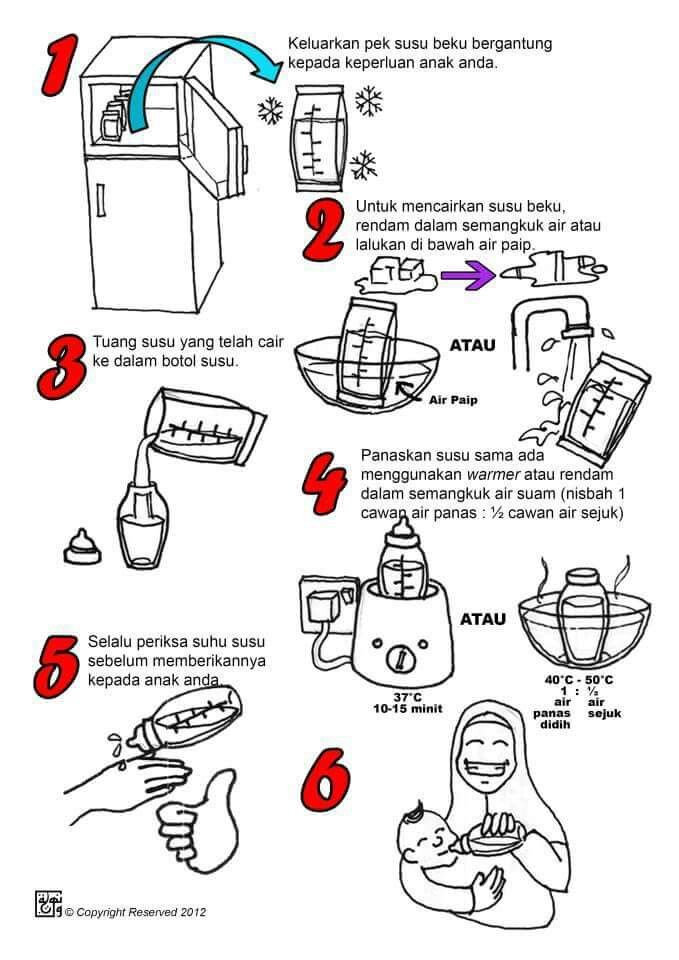 The effect of feeding method on sleep duration, maternal well-being, and postpartum depression. clinical lactation. 2011;1;2(2):22-26. - Kendall-Tuckett, K. et al., "Influence of feeding pattern on sleep duration, maternal well-being and the development of postpartum depression." Clinical Lactation. 2011;2(2):22-26.
The effect of feeding method on sleep duration, maternal well-being, and postpartum depression. clinical lactation. 2011;1;2(2):22-26. - Kendall-Tuckett, K. et al., "Influence of feeding pattern on sleep duration, maternal well-being and the development of postpartum depression." Clinical Lactation. 2011;2(2):22-26.
13 Brown A, Harries V. Infant sleep and night feeding patterns during later infancy: Association with breastfeeding frequency, daytime complementary food intake, and infant weight. Breast Med . 2015;10(5):246-252. - Brown A., Harris W., "Night feedings and infant sleep in the first year of life and their association with feeding frequency, daytime supplementation, and infant weight." Brest Med (Breastfeeding Medicine). 2015;10(5):246-252.
14 Hassiotou F et al. Maternal and infant infections stimulate a rapid leukocyte response in breastmilk. Clin Transl immunology. 2013;2(4). - Hassiot F. et al., "Infectious diseases of the mother and child stimulate a rapid leukocyte reaction in breast milk." nine0129 Clean Transl Immunology. 2013;2(4):e3.
Clin Transl immunology. 2013;2(4). - Hassiot F. et al., "Infectious diseases of the mother and child stimulate a rapid leukocyte reaction in breast milk." nine0129 Clean Transl Immunology. 2013;2(4):e3.
15 Li DP et al. Breastfeeding and ovarian cancer risk: a systematic review and meta-analysis of 40 epidemiological studies. Asian Pac J Cancer Prev . 2014;15(12):4829-4837. - Lee D.P. et al., Breastfeeding and ovarian cancer risk: a systematic review and meta-analysis of 40 epidemiological studies. Asia Pas J Cancer Prev. 2014;15(12):4829-4837.
How Much Should a Newborn Baby Eat
Search Support IconSearch Keywords
Home ›› How Much Milk Should a Newborn Baby Drink?
Home ›› How much milk should a newborn baby drink?
↑ Top
Like every new mom, you're probably wondering, "How often should a newborn eat?" and “How many milliliters does a newborn baby drink at a time?”. A mother's body is designed to provide her baby with all the nutrients she needs, but every mom needs practical advice and confidence when it comes to how much milk a newborn should drink. nine0003
A mother's body is designed to provide her baby with all the nutrients she needs, but every mom needs practical advice and confidence when it comes to how much milk a newborn should drink. nine0003
Whether you are breastfeeding, bottle feeding or a combination, here you will find all the information you need to know about how much food your baby needs to grow and develop properly.
Signs indicating that the child is hungry
Every mother has a wonderful maternal instinct, but we cannot guess the child's desires from the first time. Over time, you will learn your child's unique gestures and body movements, as well as signs that he is hungry. In the meantime, here are some of the most common signs that a child is hungry:
- turns head towards your breast or bottle;
- clenches;
- puts pens in mouth;
- pouts, smacks or licks lips.
If your child is showing any of these signs, they may be trying to tell you it's time to eat. Ideally, your baby should be fed on demand when he is hungry. If you're breastfeeding, on-demand feeding is a good way to keep your milk supply going as your body will naturally respond to your baby's needs and continue to produce the required amount of milk. Bottle-feeding on demand can also be beneficial for your baby, as it allows him to self-regulate his feeding needs. nine0003
Ideally, your baby should be fed on demand when he is hungry. If you're breastfeeding, on-demand feeding is a good way to keep your milk supply going as your body will naturally respond to your baby's needs and continue to produce the required amount of milk. Bottle-feeding on demand can also be beneficial for your baby, as it allows him to self-regulate his feeding needs. nine0003
How much breast milk should a newborn drink?
So, how much should a newborn baby eat? A remarkable feature of each child is its uniqueness, so it would be wrong to feed the baby strictly according to the instructions. Don't panic if the recommendations below don't fit your own feeding schedule, but please contact your healthcare provider or pediatrician if you have any questions.
Although every baby is different, newborns typically eat every two to three hours, for a total of 8 to 12 meals a day. nine0003
How many milliliters does a newborn baby drink? At the very beginning, your body will only produce a small amount of yellowish and thick breast milk called colostrum. This milk is an ideal source of nutrients that your newborn needs, in addition, it has many immunological components. 1
This milk is an ideal source of nutrients that your newborn needs, in addition, it has many immunological components. 1
How much milk does a newborn baby drink? Infants drink 30-60 ml per feeding, while this volume increases to 60-90 ml by two weeks of age. So don't worry if you don't feel like your body is producing much milk in those first few days after your baby is born! Feeding times will also vary, ranging from 10 to 30 minutes at the very beginning and then gradually increasing as your baby grows.
How much breastmilk the baby takes if bottle fed
If you choose to bottle feed your baby from time to time, do so at the same intervals and for the same period of time as if you were breastfeeding. Pumping is a great option for breastfeeding your baby. It will allow you to separate from the baby if necessary and at the same time retain all the benefits of breastfeeding. nine0035
It is also important to purchase a bottle that will help make bottle feeding more natural for both you and your baby.






